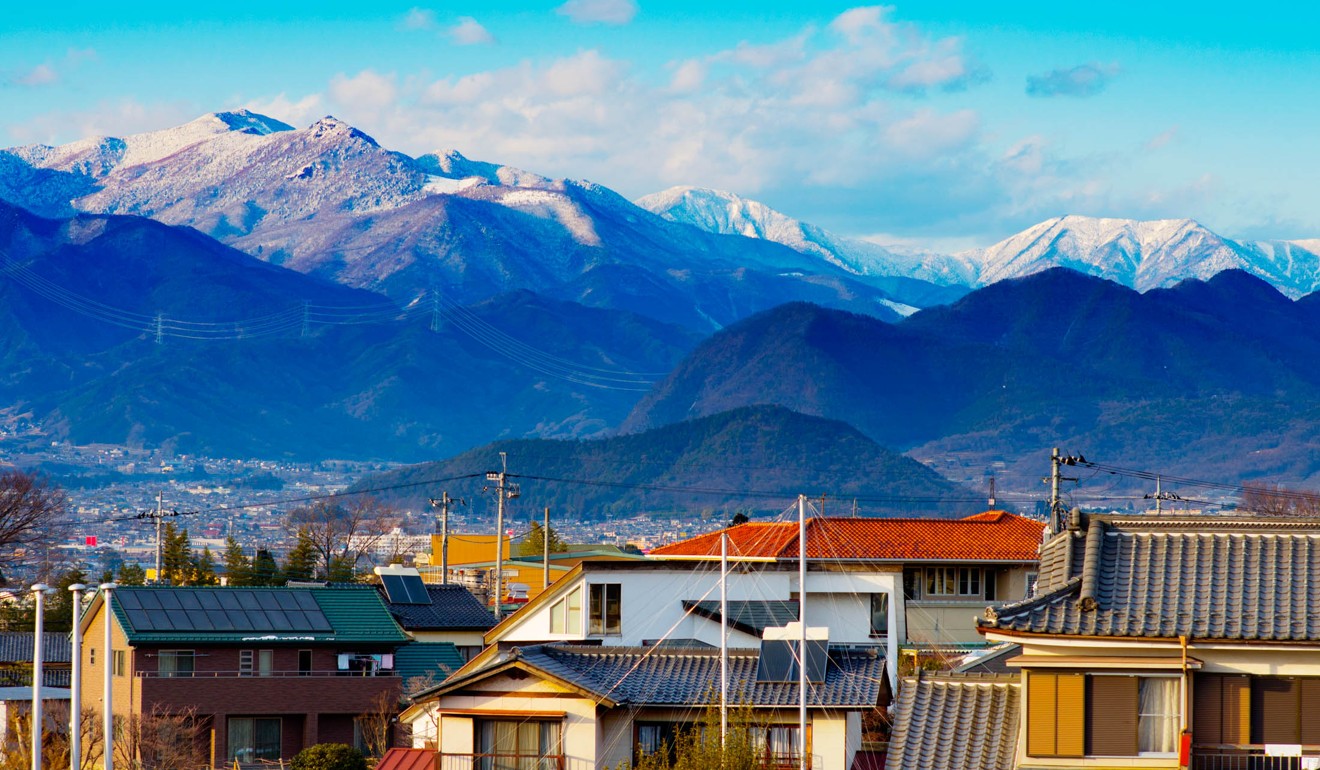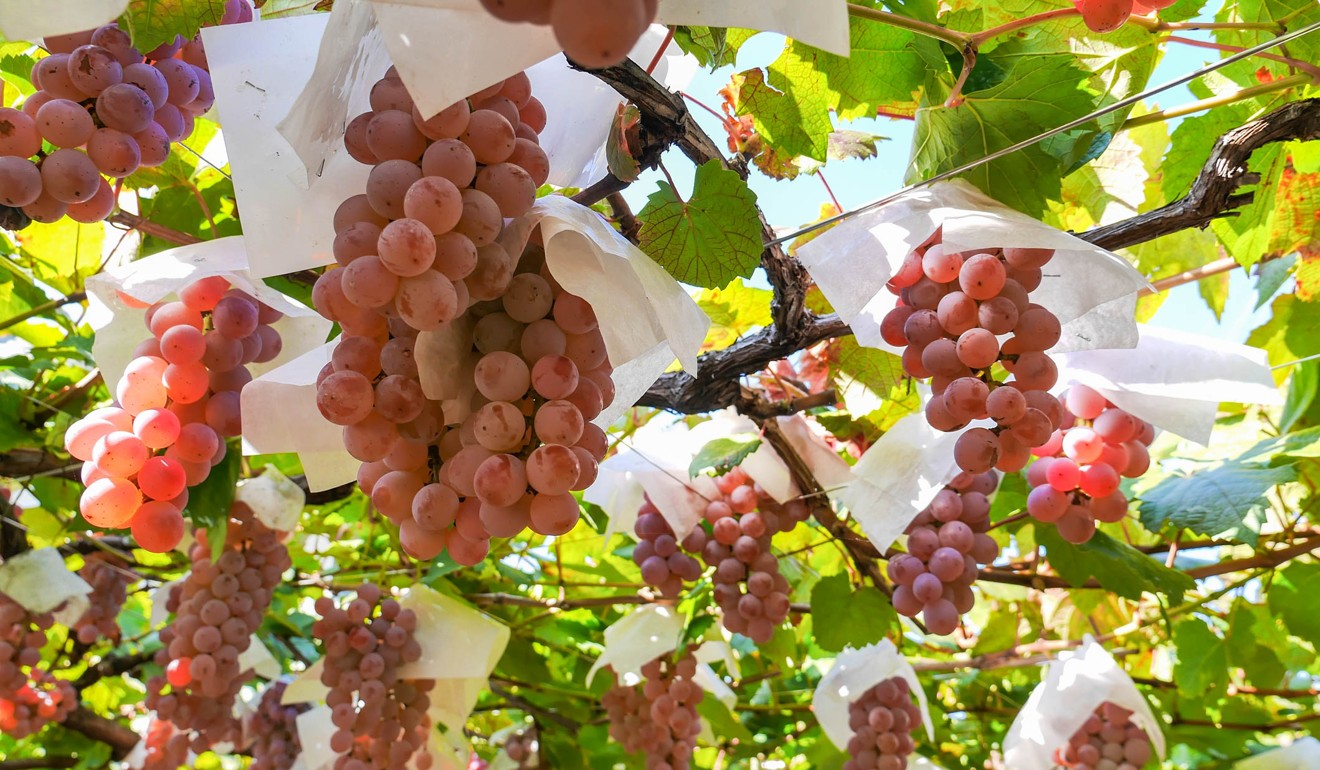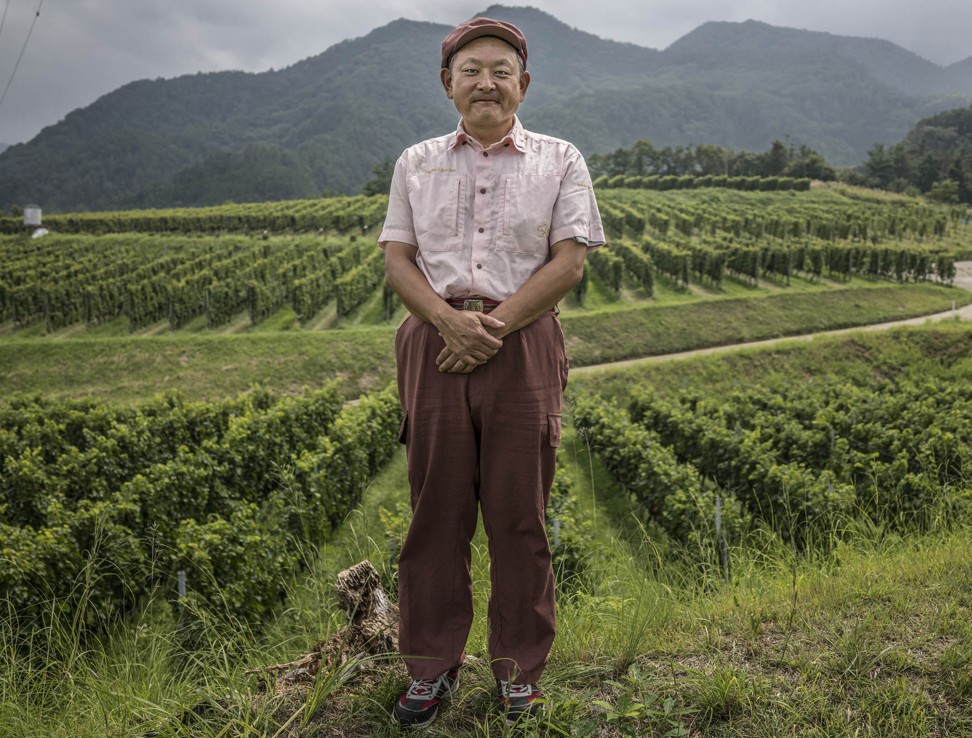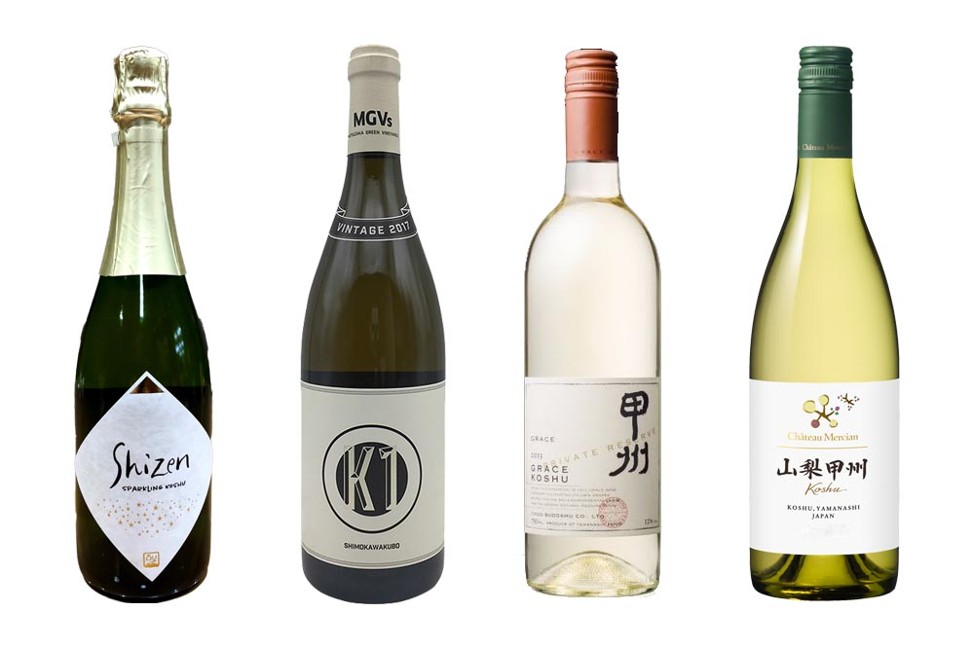How did Japan become the world’s latest serious wine frontier?

Inside a 19th-century silk merchant’s house in Katsunuma, Japan, about 70 miles west of central Tokyo, the three Aruga brothers are pouring several white wines in their timbered tasting room. All are made at their Katsunuma Jyozo winery under the Aruga Branca label from the country’s unique grape variety, koshu, and all are delicious: one is elegant and sparkling; another fresh, bright and lemony; a third succulent and tangy; still another savoury and smoky; and a fifth barrel-fermented version is round, rich and smooth.
Though many grapes are grown in Japan, wineries in Yamanashi, the most important of Japan’s four major wine regions and where Katsunuma is located, are betting on native variety koshu

About 15 years ago, when an Aruga Branca bottling won medals in a French wine competition, Bernard Magrez of famous Bordeaux chateau Pape Clement was so intrigued, he proposed a joint wine project that introduced koshu to France. Now third-generation winemaker Hiro Aruga, who studied and worked in Burgundy, has joined his father Yuji, and is experimenting to create wines of even higher quality.
Aruga Branca is part of the vinous revolution that’s making Japan the world’s latest serious wine frontier. Since 2010, koshu has been on OIV (International Organisation of Vine and Wine) list of varieties, so it can be displayed on labels in Europe. To ensure quality, government regulations were enacted last year to restrict labelling of Japanese wine to vintages made wholly in the country, from vine to barrel. The volume of exports rose nearly 30 per cent from 2015 to 2017 – from 45,000 litres to 58,000 litres, according to the National Tax Agency. Ambitious vintners anticipate more demand during this year’s Rugby World Cup and next summer’s Olympics.
Pop artist Kaws takes giant Companion to Japan on latest leg of Asian tour
Though many grapes are grown in Japan, wineries in Yamanashi, the most important of Japan’s four major wine regions and where Katsunuma is located, are betting on native variety koshu. “The grape is ideal for Japan’s humid, rainy climate. It’s thick-skinned and resistant to rot,” says Aruga.

The vineyards are unusual. At nearby Lumiere, which claims to be the oldest family-owned winery in Japan (established in 1885), koshu vines look like small trees, with branches spread-eagled on wires six feet off the ground to create a pergola. Folded paper hats are tied over hanging bunches like miniature umbrellas to shelter grapes from rain.
Japan’s enticing whites fit neatly with the latest global wine trends. Koshu wines have floral aromas and delicate, distinctive flavours (of yuzu, savoury minerals), naturally low alcohol levels (11 to 12 per cent), and they’re exotic but not odd, like, say, Georgia’s rkatsitelli which hasn’t truly taken off. The name koshu is easy to remember and pronounce. Plus, they’re perfect matches with popular Japanese mainstays sushi and sashimi.
I spent a few days in Yamanashi, a 90-minute train ride from Tokyo. It’s home to 81 of the country’s 300 wineries, and has a thousand-year history of grape growing and nearly all Japan’s plantings of koshu.
ZEST by Konishi brings French Japanese culinary style to Hong Kong
My first stop, in pouring rain, was the local Daizen-ji Temple touted as the grape’s legendary birthplace 1,300 years ago, when a monk named Gyoki saw a vision of the Buddha of medicine holding a bunch of grapes, which led him to discover a grapevine.

The real story turns out to be only slightly less fanciful. DNA analysis at the University of California at Davis showed koshu is a hybrid of mostly vitis vinifera (the species of European grapes like chardonnay) and Asian grapes. Scientific consensus is that it came to Japan from the Caucasus via the Silk Road.
But for most of its history, pretty pink-skinned koshu was a table grape for eating. Only in the past 130 years has it been turned into wine.
“For most of that time the wines were sweet and reviled,” explains Ernie Singer, a Tokyo wine merchant, who produces Shizen sparkling koshu on Mt Fuji and has been a key player in reorienting Japan’s wine industry. Along with other koshu boosters such as Chateau Mercian and Shigekazu Misawa, the intense owner of Grace winery, Singer enlisted the help of Bordeaux white wine wizard Professor Denis Dubourdieu as a consultant 15 years ago. Now almost all koshu is dry.
Will Ichiro’s Full Card Series whisky collection set an auction record?
As Misawa drove me around his vineyards in the northwest of Yamanashi, he pointed out ways he has been experimenting to improve quality. He’s planted vineyards at higher elevations, and in neat rows like those in Europe instead of the traditional pergola. He says that helps boost ripeness during wet summers and results in more body and richness in the wines. He founded organisation Koshu of Japan, which began holding annual tastings in London in 2010.

His daughter Ayana, who studied winemaking in Bordeaux, and is now the winemaker, hand picks and sorts grapes meticulously. She’s pioneering making koshu from single vineyards with different terroirs, from volcanic soil to slate. She ages most of them in oak, but says, “You have to be careful, especially with oak, because koshu aromas are very delicate.”
You could think of koshu like Cincinnati’s five way chilli. Most wineries make five or six styles – sparkling like champagne; crisp like a cross between chablis and sauvignon blanc; aged on the lees with a tangy taste like Muscadet; round, rich and aged in oak barrels; and even “orange” versions, fermented on grape skins the way red wines are, and which is the best match with sea urchin, if you’re wondering.
From its vineyards you have a panoramic view of the valley surrounded by densely forested mountains including a glimpse of snow-capped Mt Fuji
The big Japanese drinks companies – Kirin, Suntory and Sapporo – all have wineries in Yamanashi. Chateau Mercian, now a member of the Kirin group, was the first to make a dry koshu on the lees, and turned to Dubourdieu and the late Paul Pontallier of Chateau Margaux for help in making more elegant wines. Suntory, famous for whisky, actually began as a wine company more than a century ago. From its vineyards you have a panoramic view of the valley surrounded by densely forested mountains including a glimpse of snow-capped Mt Fuji. Both make excellent wines from familiar Western grapes like sauvignon blanc and merlot, as well as koshu.
6 of the best private hot spring onsens in Japan
New boutique wineries reflect today’s boom. Hiroshi Matsuzaka founded modern, Western-style MGVS winery three years ago in a former semiconductor plant where he used to make precision parts for smartphones. Except for the signs in Japanese, his hipster-style tasting room with shiny green metal chairs and a bar could be in Napa.

We donned disposable white hairnets and bootees to tour the industrial winery. Where he once used liquefied nitrogen gas to protect silicon wafers from oxygen and moisture, he now uses it to prevent grape juice from deteriorating through oxidation. Despite his scientific bent, every tank is named for a tarot card. His wines will be in the United States next year.
Yamanashi is an easy day or weekend trip from Tokyo and most wineries have tasting rooms and cafes open daily. One of the most popular lunch stops is small family-run Haramo winery housed in a building once used for silkworms, where you can enjoy simple Japanese vegetable plates with maitake mushrooms and sausages as well as meat curries on rice and, afterwards, superb coffee.
Like many wineries it also makes a red wine from native grape Muscat Bailey A, a hybrid developed in 1927. How can I put it? I’m not a fan of its confectionery-like scents and intense, cherry-confectionery flavours. Stick with koshu.
“The next generation will make great red wines as well as white,” predicts Haramo owner Shintaro Furuya, “but we’re on our way”.
Eight koshu wines to try

Some of these wines are available in Britain and the US, others will arrive next year. You can order now from Japanese online retailer Dekanta. If they don’t list it, they may be able to source it for you.
2015 Shizen sparkling koshu (US$50) Crisp and lemony and made by the traditional method used for champagne, this sparkler has an almondy richness and salty character. It’s poured at top Tokyo restaurants RyuGin and Esperance.
2017 MGVs K131 Shimokawakubo (US$50) Very dry, savoury and smoky, this intense wine offers aromas of ripe grapefruit, herbs and honeysuckle with round, citrusy and mineral flavours. Next year it will be available through Joto Sake in the US.
2017 Grace Koshu Private Reserve Koshu (US$25) The elegant koshu has the tang of a golden delicious apple overlaid with notes of lemon and chalk. All the winery’s koshus are brilliant. Especially Cuvee Misawa Areno, with its herb and grapefruit flavours and aromas of jasmine.
Why wine auction director John Kapon has faith in the personal touch
2017 Chateau Mercian Yamanashi Koshu (US$27) Light and citrusy, with hints of green apple, this has the rich, savoury quality of koshu aged on the lees. Also look for Koshu Cuvee Ueno and Koshu Gris de Gris.
2017 Haramo Koshu Lees Contact (US$18) Fresh, very subtle and delicate, it’s a bit like richer Muscadet with spice and tang. Also look for their barrel-aged version.
2017 Aruga Branca Issehara (US$99) This single vineyard white mostly made in stainless steel tanks has floral, peach-and-lime aromas and deep, complex mineral flavours. Every koshu from this producer is stunning.
2016 Lumiere Prestige Class Orange (US$34) Koshu grapes make terrific orange wines. This one has a light apricot colour, umami flavours, and a rich texture. The winery’s sparkling koshus are also worth seeking out.
2017 Suntory Tomi no Oka Koshu (US$60) With fresh acidity, this has bright aromas and a lot of snappy richness for a white wine. The grapes come from 40-year-old vines grown at a high altitude.
Want more stories like this? Sign up here. Follow STYLE on Facebook, Instagram, YouTube and Twitter

Wineries in Yamanashi, the most important of Japan’s four major wine regions, are betting on native grape variety koshu, writes Elin McCoy